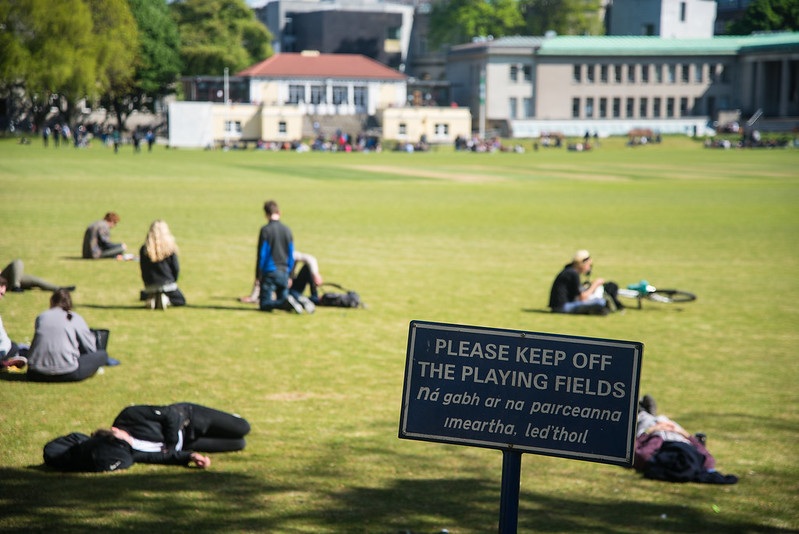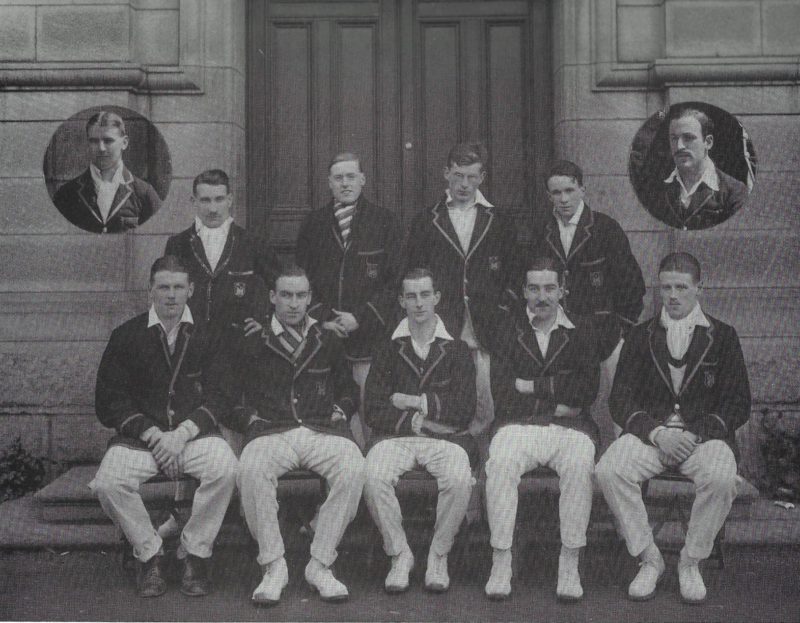College Park has for many years been at the heart of sporting life in Trinity. A pristine playing field in the heart of Dublin City, the ground has a fabled history that dates back to the beginning of the 19th century.
Curiously, the earliest evidence of play on College Park is traceable to an obituary dedicated to a certain Dr Jacky Barrett, published in the Times of London almost 200 years ago. Ger Siggins, a journalist and member of Dublin University Cricket Club’s (DUCC) alumni board, describes Barrett as a “Trinity character”. The eccentric lecturer spent over 50 years of his life working in the College, reading Greek, Latin and Persian. Barrett’s obituary outlines that cricket was “played almost every day at the proper season, in College Park”.
As recorded in the obituary, the establishment of College Park as a playing field is dated back to 1820. Informal matches were played throughout the 1820’s, before a local cricket club known as The Phoenix Club took up residency in College Park in 1830. Comprised mostly of aristocrats and members of parliament – including John Parnell, father of Charles Stewart Parnell – the club met regularly at the ground to play.
However, it wasn’t until 1835 that DUCC was founded in Trinity. DUCC played their first fixtures against various teams connected to the Phoenix Club. From then on, the history of College Park became synonymous with the growth of DUCC.
As the popularity of organised sport grew in the university, College Park became a hotbed for the best talent in representative cricket. From the late 19th century, DUCC was considered the pre-eminent cricket club in Ireland, and with time began to make an impact on the international cricket circuit.
The West Indies came to College Park to play Trinity in 1928. It’s not imaginable. It’s like Brazil coming to play the soccer club
Siggins tells me that this period could be considered as the club’s golden era: “Trinity was actually a really important club in terms of Irish cricket for a long, long time. South Africa, Australia and the West Indies all came to play Trinity, while they were on tour in England.”
“Trinity were very strong. They played the West Indies less than 100 years ago – think of that. The West Indies came to College Park to play Trinity in 1928. It’s not imaginable. It’s like Brazil coming to play the soccer club.”
It’s by no means an unfair comparison to make: many of Ireland’s finest cricketers of that era graced College Park for the university side. Among them was acclaimed modernist playwright and author Samuel Beckett. A multi-faceted athlete, Beckett represented the university’s cricket team while studying French and Italian in Trinity.
In the summers of 1925 and 1926 he travelled across the Irish Sea with DUCC to face some of the best sides in England. To this day, he remains the only Nobel-Prize winner to have played first-class cricket, an official classification given to cricket matches considered to be played at the highest grade.
Inevitably, the strength of the sport in Trinity waned as time went on. Siggins tells me that there were a “couple of declines”, most notably in the late 1920’s: “The [decline] in the 20’s was because Irish cricket in general declined, and that was a lot to do with the British leaving [after the Anglo-Irish Treaty].”
The decline in the 1920’s was because Irish cricket in general declined, and that was a lot to do with the British leaving after the Anglo-Irish Treaty
“That would have had a huge impact, and the game did go into serious decline in the 20s, 30s, 40s, even 50s. It was very much a dying sport until the late 60s, and then things started to pick up again.”
Complications arising from a fraught political landscape in the early 20th century triggered more than just a fall in the popularity of cricket in Trinity. On June 3rd, 1921, College Park was the scene of a gun attack as the War of Independence entered its final bloody weeks.
On a warm summer’s day, a sizeable crowd had gathered at the ground to watch a cricket match between the Gentlemen of Ireland and the Military of Ireland. Tragedy struck when, shortly after 5.30pm, shots were fired in the direction of the playing field from the Nassau St side of College Park.
While the intended target had been the cricketers representing the military, the attackers instead fatally wounded 20-year-old Katherine Wright, a student of the university who had been attending the match with her fiancé.
Bizarrely, the match continued for a short period after the shooting. It was eventually halted when Provost John Henry Bernard liaised with captains of both sides to abandon the tie.
Once a powerhouse of international cricket, DUCC would never emulate the glories of the early 20th century to the same extent. However, as the decades rolled on, the club did manage to recapture some of their past success.
Michael Halliday was captain of the Trinity side that last won the Leinster Senior League in 1970. He tells me how with the support of Dublin University Central Athletic Club (DUCAC), DUCC returned to the forefront of Irish cricket: “In those days, there was a hierarchy of sport. We were looked after very well by DUCAC … I went on five tours in England at the end of the Trinity cricket season.”

College Park comes alive in the summers, with both cricket teams lining out.
“In 1970, we played 26 games of cricket, which included three two-day games – that’s by the end of June. I mean, now they play about five league matches, if that, and maybe one or two friendlies, and that’s the extent of the cricket club season. It’s completely different.”
DUCC now play in the 2nd Division of the Leinster Senior League, their season confined to several weeks at the beginning of the summer. While the heights of the club’s history are now in the distant past, DUCC still pride themselves on being a key producer of Irish cricketing talent.
“Ed Joyce has been the big star of recent years, and George Dockrell”, Siggins says. “Joyce has been … probably the best Irish batsman of all time. He played for the college between 1997 and 2001.”
“He’s still involved – played a game for the club last year. He’s still around, still helping out when he can.”
Lorcan Tucker is another prominent name that has come through the ranks at DUCC. The wicketkeeper was the captain of the club for two years, before he made his debut for Ireland last May against England.
As their home ground approaches its 200th anniversary, DUCC have time to reflect on the rich sporting culture that has taken root and grown around College Park. With such a storied history, the club can take inspiration from the great sportspeople that have taken to the playing field over the years as they look to their next chapter.







